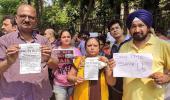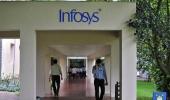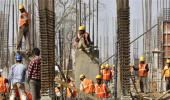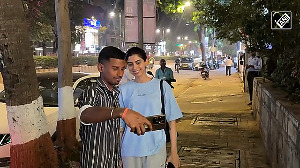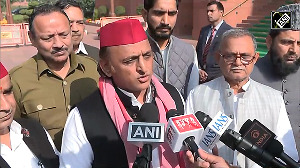Uber CEO Dara Khosrowshahi says the younger generation doesn’t dream of owning a car, but instead wants the freedom of having any service on demand.

Uber Chief Executive Officer Dara Khosrowshahi says the younger generation doesn’t dream of owning a car, but instead wants the freedom of having any service on demand.
He also feels that established protocols and industries are the enemies of innovation.
“Car ownership is a trap that can sometimes be prevented.
"India does not need to be trapped by these establishments.
India can actually be the innovator for the developing countries of the world,” Khosrowshahi said in New Delhi on Tuesday.
He was responding to a question seeking comment on Finance Minister Nirmala Sitharaman’s assessment that the slowdown in the domestic auto industry was due to a shift in the millennials’ preference for ride-hailing apps.
On concerns that the company is losing a lot of money in India, Khosrowshahi said, “The profitability characteristics of our business here (in India) are improving.
"India is a fundamental part of Uber’s growth; it’s among the top 10 markets for us.
"We continue to lean on and invest in India.”
“We are going to invest the profits from some of our more mature products into your products, such as Auto, Moto, and Transit,” he added.
The Uber CEO was in New Delhi to announce a partnership with Delhi Metro Rail Corporation (DMRC) under which the Uber app will get integrated with the details of metro trains to provide commuters a seamless experience while travelling from one point to another.
Delhi is the second Asia-Pacific city where Uber will provide riders with the ability of planning their transit journey with real-time information and end-to-end directions via its app.
Initially, Uber will only provide an overview of routes on which public transport is available.
In the long term, however, there is a plan to integrate payments for different modes of transport within the Uber app.
Khosrowshahi agreed that India was a competitive market, with consumers wanting a great service at low prices.
“India has also become the innovation gateway for Uber which it can export to other parts of the world,” he said.
The company is already planning to double its headcount in the Hyderabad and Bangalore research and development (R&D) centres to 1,000 and has already developed key products like Uber Lite, which is now used across the world.
Also clearing doubts on its commitment to the ride-share business in India, especially after it sold some of the business in Southeast Asia to its rival, the Uber CEO said: “If I look at Uber’s growth over the next 10 years, it’s going to be defined by markets like India, Africa and the Middle East, more so than the developed markets such as the US and Europe.”
On Tuesday, Uber launched a “public transport” feature within the app in New Delhi, which would be integrated with the Uber app.
After opening the Uber app and entering a destination, riders will see ‘public transport’ as an option alongside UberGo, Premier and Pool.
Upon selecting the feature, riders will be able to see the fastest and cheapest routes, real-time schedules, and departure time for public transportation, including Metro and buses and walking directions, to and from nearby Metro stations and bus stops.
Uber won a public bid to offer its mobility services across 210 DMRC stations in the city.
The DMRC had run pilot programmes with both Uber and its Indian competitor Ola last December to provide better last-mile connectivity to Metro riders.
The idea was to allot bare spaces at almost all Metro stations to cab aggregators.
The partnership makes sense for last-mile connectivity, given that 25 per cent of all Uber Moto (Uber’s motorcycle ride option) rides in Gurugram either originate or end at Metro stations, according to Uber's Chief Product Officer Manik Gupta.
“This new initiative integrating public transport with mobility operators like Uber will certainly boost first and last-mile connectivity solutions for around 6 million passenger journeys performed in the system daily.
"DMRC has in the recent past encouraged the adoption of increased last mile connectivity solutions which are environment friendly, easy to operate and navigate in areas adjoining Metro stations like e-rickshaws, e-bikes/scooters, etc.
"Additionally, it has partnered with on-demand mobility operators like Uber to enhance their commuting experience with seamless last mile connectivity,” said Mangu Singh, managing director, DMRC.
Photograph: Anushree Fadnavis/Reuters


